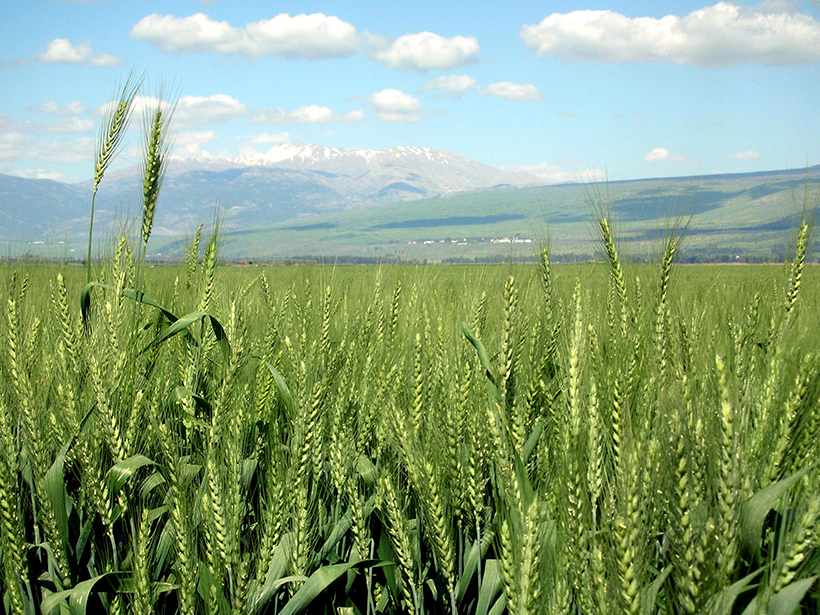Source: Earth’s Future
Scientists and policy makers alike have recognized that agricultural yields are at risk from climate change and human-caused emissions. Carbon dioxide is the largest driver of climate change, but in a new study, Shindell found that other anthropogenic, or human-sourced, emissions cause more damage to crop yields.
Methane (mainly from natural gas production and livestock), halocarbons (used in refrigeration and air conditioning), and black carbon (from fossil and biomass fuels) all contribute to climate change to varying degrees. But until now, studies have not attempted to attribute agricultural impacts to individual pollutants; instead, many focused on how downstream processes, like increasing temperature, affect the globe.
Here the author sought to create a more complete picture of the effects of human emissions. Using climate data from his previous studies and the Intergovernmental Panel on Climate Change’s fourth and fifth assessment reports and crop yield data from previous work, the author created a model to determine the effect that individual greenhouse gases have on global temperature, precipitation, carbon dioxide, and ozone—all of which affect crop success.
The model revealed that in the short term—in the first decade after emissions are released—the greatest damage to crops per ton comes from black carbon and from gases used in refrigeration. Methane emissions are also very harmful to plants because the gas increases surface ozone that causes harmful chlorosis, or a yellowing of the leaves.
The effects of carbon dioxide are more complicated. Carbon dioxide fertilizes plants, which means as the amount of the gas in the atmosphere increases, crop yields initially increase as well. But as carbon emissions continue to contribute to climate warming, the overall impact becomes negative and will outweigh the benefits of fertilization after only 10 years.
Overall, the model suggests that approximately 93% of crop losses throughout the rest of this century will be caused by non–carbon dioxide emissions, the most damaging of these being methane. Even if the impact of surface ozone is taken out of the results, the non–carbon dioxide damage is still 9 times larger than that caused by carbon dioxide.
Finally, to see how policy and societal actions to mitigate pollutant emissions might affect crops, the author compared two future scenarios: one with low emissions and another with high emissions. If strong emission mitigation techniques are implemented, the results show that crop yields will improve by about 3% for reduced carbon dioxide, 5% for a reduction in hydrofluorocarbons, and 16% if methane is reduced. Under the high-emission scenario, crop yield losses will be about 25% greater by the end of the century, threatening global agriculture.
As the first study to look at the relative contributions of individual pollutants to climate change and crop yield losses, the findings here fill an important gap for policy makers, who can limit specific pollutant emissions. The author suggests that policy makers should strengthen efforts to reduce methane and hydrofluorocarbons in the atmosphere to help prevent severe crop loss by the end of the century. (Earth’s Future, doi:10.1002/2016EF000377, 2016)
—Alexandra Branscombe, Freelance Writer
Citation:
Branscombe, A. (2016), Which greenhouse gas does the most damage to crops?, Eos, 97, https://doi.org/10.1029/2016EO057457. Published on 15 August 2016.
Text © 2016. The authors. CC BY-NC-ND 3.0
Except where otherwise noted, images are subject to copyright. Any reuse without express permission from the copyright owner is prohibited.

